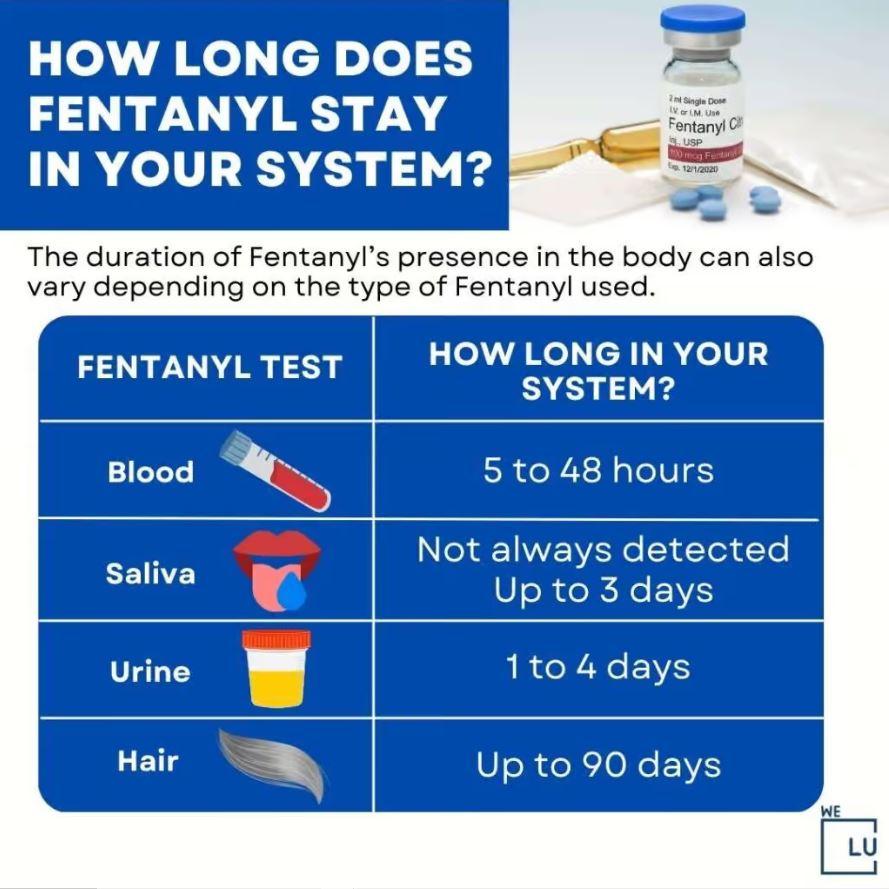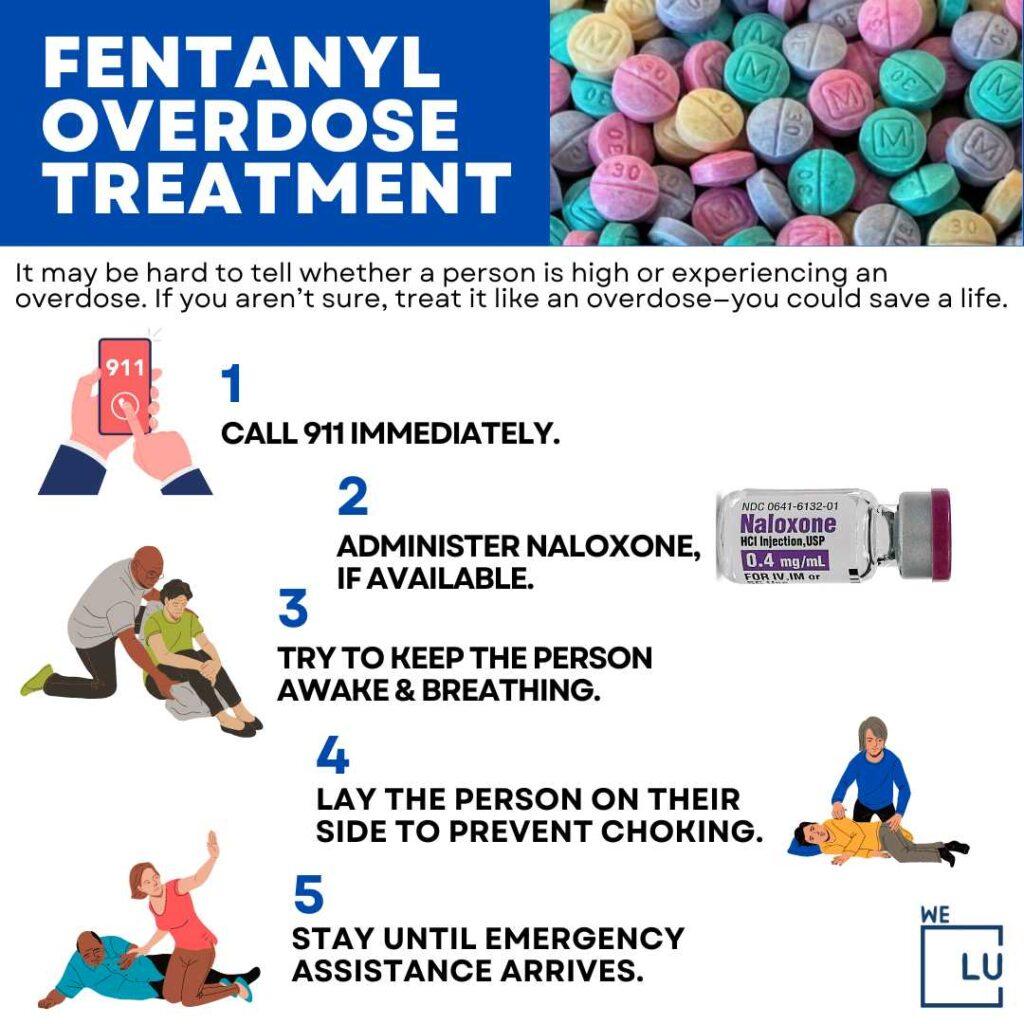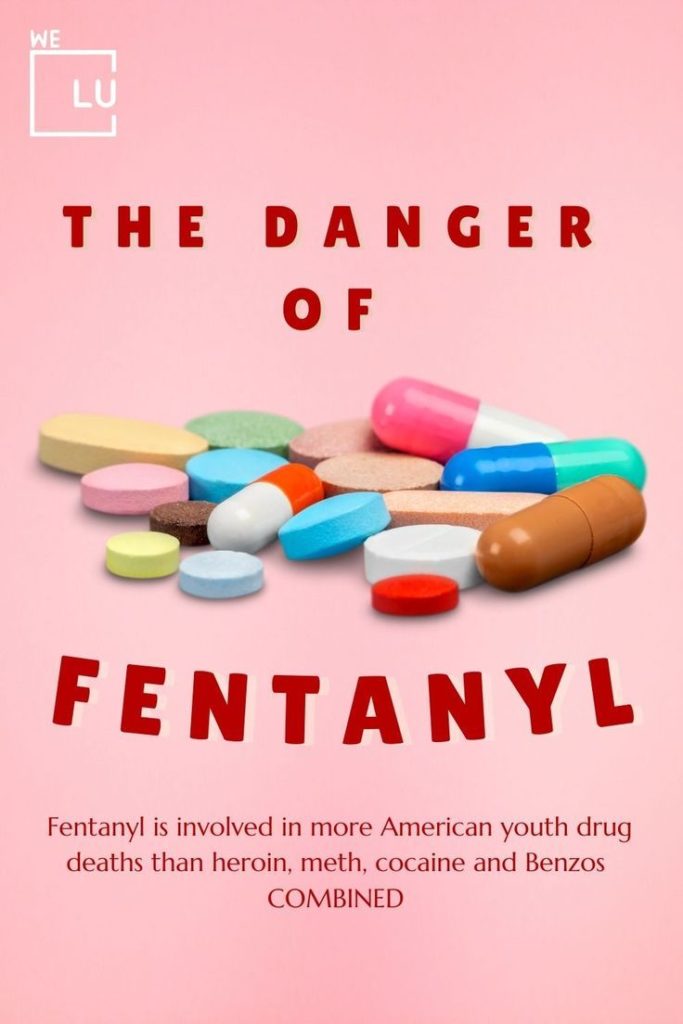How Long Does Fentanyl Stay In Urine?
The duration that fentanyl remains detectable in urine varies depending on several factors, including the individual’s metabolism, frequency of use, dosage, and overall health. Fentanyl is a potent synthetic opioid painkiller often prescribed for severe pain management. However, it’s also one of the opioids with a high potential for abuse, leading to concerns about its presence in urine tests, especially for those undergoing addiction recovery in rehab centers.
Fentanyl can be detected in urine for approximately 1 to 3 days after the last use. However, this window can be shorter or longer based on individual circumstances. For instance, occasional users might have a shorter detection window, while chronic users or those with slower metabolisms could have a longer one.
Here’s a general overview of the detection times for fentanyl and its metabolites in urine:
| Usage Frequency | Detection Time |
|---|---|
| Single use | 1-2 days |
| Moderate use | 2-3 days |
| Chronic use | 3 or more days |
Notably, fentanyl is metabolized in the liver into various metabolites, such as norfentanyl and des propionyl fentanyl, contributing to its detection in urine tests. These metabolites can extend the detection window beyond the presence of the parent compound.
It’s worth emphasizing that the information provided is a general guideline, and individual variations can be significant. Factors such as hydration levels, kidney function, and even the specific type of urine test can influence detection accuracy. In addiction recovery settings, regular urine testing helps clinicians monitor an individual’s progress and adherence to treatment plans.
In conclusion, the duration of fentanyl detection in urine is influenced by many factors. While the general range of 1 to 3 days is a helpful guideline, individuals in rehab centers should work closely with their healthcare providers to better understand their unique situation. Accurate detection of fentanyl in urine not only aids in ensuring effective treatment but also plays a vital role in supporting successful long-term recovery.
How Do Fentanyl Urine Tests Work?
Fentanyl urine tests, commonly known as urine drug tests or UDTs, play a crucial role in detecting the presence of fentanyl and its metabolites in an individual’s system. These tests are widely used in various settings, including addiction treatment centers, pain management clinics, and workplace drug screening programs. Understanding how these tests work provides insight into their significance in monitoring fentanyl use and aiding in clinical decision-making.
- Immunoassay Screening: The initial step in fentanyl urine testing involves an immunoassay screening. This method relies on antibodies that bind specifically to fentanyl and its metabolites. A urine sample is collected from the individual and mixed with a reagent containing these antibodies. If fentanyl or its metabolites are present in the urine, they will bind to the antibodies, forming a complex. This complex then produces a signal that indicates a positive result for fentanyl use.
- Confirmation Testing: Further confirmation testing is typically conducted if the immunoassay screening yields a positive result. Confirmation tests, such as gas chromatography-mass spectrometry (GC-MS) or liquid chromatography-mass spectrometry (LC-MS), offer a more precise and specific urine sample analysis. These techniques can differentiate between various opioids and their metabolites, confirming the presence of fentanyl.
- Detection Thresholds and Cutoffs: Urine tests have specific detection thresholds and cutoff levels. Detection thresholds refer to the minimum amount of fentanyl or its metabolites that must be present in the urine for the test to yield a positive result. Cutoff levels are established to minimize the likelihood of false positives, ensuring that only significant amounts of the substance trigger a positive result.
- Metabolite Detection: Fentanyl is metabolized in the body into different compounds, and some of these metabolites may have longer detection windows than the parent drug itself. The presence of metabolites, such as norfentanyl and des propionyl fentanyl, in the urine can indicate recent fentanyl use.
- Interpretation and Clinical Significance: Healthcare providers, particularly those in addiction treatment and pain management, interpret the results of fentanyl urine tests within the context of the individual’s medical history, prescribed medications, and treatment plan. Positive results might prompt discussions about treatment adjustments, interventions, or counseling.

Skip To:
Learn More:
- Why Is Fentanyl So Dangerous? Dangers Of Fentanyl & How Much Fentanyl Is Dangerous?
- How Is Fentanyl Made? Fentanyl Facts
- How Long Does Fentanyl Stay In Your System, Urine, Blood, Salvia & Hair? Fentanyl Drug Test Duration Chart.
- What Does Fentanyl Do To You? Abuse, Side Effects & Treatment
- What is Fentanyl? Rainbow Fentanyl Symptoms, Uses, Side Effects, Overdose & Detox Withdrawal Timeline
- What Does Fentanyl Look Like? Rainbow Fentanyl, Colored Candy Fentanyl, Skittles Fentanyl Images, Facts, Warnings, & FAQs
- Carfentanil Drug
- Fentanyl Detox
- Fentanyl and Alcohol
- Fentanyl Rehab
- Fentanyl Withdrawal Timeline
In addiction recovery settings, regular fentanyl urine testing serves multiple purposes. It helps clinicians monitor an individual’s treatment plan adherence, detect potential relapses, and adjust therapeutic approaches accordingly. Additionally, these tests contribute to fostering a supportive environment for long-term recovery by promoting accountability and open communication between healthcare providers and patients.
In essence, fentanyl urine tests combine immunological techniques and advanced instrumentation to provide accurate information about an individual’s fentanyl use. This valuable data guides medical professionals in tailoring effective treatment strategies and ensuring the well-being of those navigating the challenges of addiction and recovery.
Get Help. Get Better. Get Your Life Back.
Searching for Accredited Drug and Alcohol Rehab Centers Near You?
Even if you have failed previously and relapsed, or are in the middle of a difficult crisis, we stand ready to support you. Our trusted behavioral health specialists will not give up on you. When you feel ready or just want someone to speak to about therapy alternatives to change your life call us. Even if we cannot assist you, we will lead you to wherever you can get support. There is no obligation. Call our hotline today.
(844) 597-1011How Long Does Fentanyl Stay In Urine? Popular FAQs
-
Is Fentanyl Urine Testing Safe?
Fentanyl urine testing is considered safe and is widely used in various medical and clinical settings. The tests themselves do not pose any significant health risks. They involve collecting a urine sample and analyzing it for the presence of fentanyl and its metabolites. However, following proper collection procedures and ensuring the privacy and confidentiality of individuals undergoing the test is essential. Healthcare professionals conduct these tests to monitor treatment progress, aid in clinical decision-making, and support individuals in their journey toward recovery.
-
How Long Is Fentanyl Detectable In Urine?
The detection window for fentanyl in urine varies based on several factors, including usage frequency, individual metabolism, and dosage. Fentanyl can be detected in urine for approximately 1 to 3 days after the last use. Occasional users might have a shorter detection window, while chronic users or those with slower metabolisms could have a longer one. Notably, fentanyl’s metabolites, such as norfentanyl and des propionyl fentanyl, can also contribute to the detection window, extending it beyond the presence of the parent compound.
Fentanyl Factsheet
Fentanyl Overview
Fentanyl is a synthetic opioid used to treat moderate to severe pain, especially in cancer patients or after surgery. It is 50 to 100 times more potent than morphine and can cause respiratory depression, addiction, and overdose. It can be prescribed in different forms, such as injection, nasal spray, patch, tablet, spray, or lozenge. It can also be illegally made and mixed with other drugs, such as heroin or cocaine.
Fentanyl Drug Tests
- Fentanyl Blood Test: Fentanyl can typically be detected in blood for a relatively shorter period than urine or hair. The detection window for a blood test is often around 1 to 2 days after use. Blood tests are often used in emergencies or when recent drug use needs to be confirmed promptly.
- Fentanyl Saliva Test: Saliva tests have a slightly longer detection window than blood tests. Fentanyl can usually be detected in saliva for 1 to 3 days after use. Saliva tests are non-invasive and can provide relatively quick results, making them useful in various testing scenarios.
- Fentanyl Urine Test: Urine tests are among the most common methods for detecting fentanyl use. Fentanyl can be detected in urine for approximately 1 to 3 days after the last use. Fentanyl metabolites can extend the detection window beyond the parent drug’s presence. The urine test’s popularity is due to its longer detection window and ease of sample collection.
- Fentanyl Hair Test: Hair tests have the most extended detection window among these methods. Fentanyl and its metabolites can be detected in hair for up to 90 days or even longer after use. This is because trace amounts of drugs are incorporated into hair strands as they grow. Hair tests are often used when a more extended history of drug use needs to be assessed.
Fentanyl Addiction Treatments
Addressing fentanyl addiction requires a comprehensive and individualized approach due to the potency and risks associated with the drug. Here are some critical treatments and strategies for managing fentanyl addiction:
- Medical Detoxification: Medical detoxification, or detox, is often the initial step in treating fentanyl addiction. Under medical supervision, individuals are gradually tapered off fentanyl to manage withdrawal symptoms. Medical professionals may administer medications to ease withdrawal discomfort and reduce cravings.
- Medication-Assisted Treatment (MAT): MAT involves using medications to reduce cravings and manage withdrawal symptoms. Buprenorphine, methadone, and naltrexone are commonly used medications for opioid addiction, including fentanyl. These medications can help stabilize individuals in recovery and reduce the risk of relapse.
- Behavioral Therapies: Behavioral therapies play a crucial role in addressing the psychological aspects of addiction. Cognitive-behavioral therapy (CBT), contingency management, and motivational enhancement therapy are effective in helping individuals identify triggers, develop coping skills, and modify behaviors associated with drug use.
- Counseling and Support Groups: Individual and group counseling provides a platform for individuals to explore underlying issues contributing to addiction. Support groups like Narcotics Anonymous (NA) offer a sense of community and shared experiences, fostering a supportive environment for recovery.
- Holistic Approaches: Holistic therapies, such as yoga, meditation, art therapy, and mindfulness practices, can complement traditional treatments by promoting overall well-being and stress reduction.
Fentanyl Abuse Statistics
Fentanyl abuse statistics show that fentanyl is a highly potent synthetic opioid significantly contributing to the opioid epidemic in the United States. In 2020, there were over 93,000 drug overdose deaths in the US, with fentanyl involved in over 60%. Fentanyl abuse has also increased in other countries, including Canada and the United Kingdom.
73%
Synthetic opioids, including fentanyl, were involved in almost 73% of all opioid-related overdose deaths in 2019.
Source: CDC
1.6 million
Approximately 1.6 million people aged 12 or older misused prescription pain relievers like fentanyl for the first time in 2020.
Source: The National Survey on Drug Use and Health
57%
Fentanyl seizures by law enforcement in the US increased by 57% from 2019 to 2020, with nearly 17,000 pounds of fentanyl seized in 2020.
Source: DEA

Get Your Life Back
Find Hope & Recovery. Get Safe Comfortable Detox, Addiction Rehab & Dual Diagnosis High-Quality Care.
Hotline(844) 597-1011
Why is Fentanyl In Urine?
Fentanyl can be detected in urine due to its metabolic breakdown and excretion. When a person consumes fentanyl through medical prescription or illicit use, the drug undergoes various metabolic transformations as the body processes it. These processes eventually lead to the formation of metabolites, which are then eliminated from the body through urine and other means.
The metabolic breakdown of fentanyl involves enzymatic reactions in the liver, where the drug is transformed into different compounds. These metabolites, including norfentanyl and despropionyl fentanyl, are byproducts of fentanyl metabolism. Over time, these metabolites are filtered by the kidneys and excreted from the body primarily through urine.
The reason fentanyl and its metabolites are detected in urine is that urine serves as a significant route for the elimination of waste products and substances processed by the body. After fentanyl is metabolized, the resulting compounds are carried by the bloodstream to the kidneys, filtered out, and eventually expelled from the body in urine.
Detection of fentanyl in urine is a common method used in medical, clinical, and forensic settings for various purposes. In addiction treatment programs, urine tests help monitor patients’ compliance with treatment plans and identify potential relapses. In pain management, they ensure the proper use of prescribed medications. In forensic investigations, urine tests can provide insights into recent drug use or overdose cases.
It’s important to note that the presence of fentanyl in urine doesn’t necessarily indicate current impairment, as the drug’s detection window can vary based on factors such as usage frequency, metabolism, and the sensitivity of the testing method.
First-class Facilities & Amenities
World-class High-Quality Addiction & Mental Health Rehabilitation Treatment
Rehab Centers TourRenowned Addiction Centers. Serene Private Facilities. Inpatient rehab programs vary.
Addiction Helpline(844) 597-1011Proven recovery success experience, backed by a Team w/ History of:
15+
Years of Unified Experience
100s
5-Star Reviews Across Our Centers
10K
Recovery Success Stories Across Our Network
- Low Patient to Therapist Ratio
- Onsite Medical Detox Center
- Comprehensive Dual-Diagnosis Treatment
- Complimentary Family & Alumni Programs
- Coaching, Recovery & Personal Development Events
How Do Fentanyl Urine Test Strips Work?
Fentanyl urine test strips, also known as fentanyl test dip cards or fentanyl test cassettes, are simple and rapid diagnostic tools used to detect the presence of fentanyl and its metabolites in urine samples.
These test strips are commonly used in various settings, including medical facilities, addiction treatment centers, and harm reduction programs, to quickly assess whether fentanyl is present in a person’s system. Here’s how fentanyl urine test strips work:
- Sample Collection: A urine sample is collected from the individual undergoing testing. This sample is typically collected in a clean container provided with the test kit.
- Preparing the Test Strip: The fentanyl urine test strip is a small, rectangular device that contains one or more test zones. Each test zone is coated with antibodies that react with fentanyl and its metabolites.
- Dipping the Strip: One end of the test strip, usually marked as the “dip end,” is dipped into the urine sample for a few seconds. The strip absorbs the urine through its capillary action, allowing it to migrate along the test zones.
- Migration and Reaction: As the urine migrates along the test zones, it encounters the antibodies coated on the strip’s surface. If fentanyl or its metabolites are present in the urine, they will bind to these antibodies, forming an antigen-antibody complex.
- Development of Test Lines: If the urine sample contains fentanyl, the antigen-antibody complex will continue to migrate along the strip until it reaches a specific test zone. In this zone, a visible test line will appear. The intensity of this line can vary depending on the amount of fentanyl present in the sample.

- Control Line: A control line, often adjacent to the test zone, is an internal control for the test’s validity. It should appear regardless of whether fentanyl is present in the sample. The control line ensures that the test was conducted correctly and that the test strip functions as intended.
- Interpreting the Results: The appearance of a test line in the fentanyl test zone indicates a positive result, suggesting the presence of fentanyl or its metabolites in the urine sample. The absence of a test line in the fentanyl test zone indicates a negative result. The control line must always appear for the test to be valid.
Fentanyl urine test strips provide a rapid and qualitative assessment of fentanyl presence in urine samples. However, it’s important to note that these tests are not as precise as confirmatory laboratory tests like gas chromatography-mass spectrometry (GC-MS) or liquid chromatography-mass spectrometry (LC-MS). If necessary, positive results from urine test strips should be confirmed through more accurate methods.
World-class, Accredited, 5-Star Reviewed, Effective Addiction & Mental Health Programs. Complete Behavioral Health Inpatient Rehab, Detox plus Co-occuring Disorders Therapy.
CALL(844) 597-1011End the Addiction Pain. End the Emotional Rollercoaster. Get Your Life Back. Start Drug, Alcohol & Dual Diagnosis Mental Health Treatment Now. Get Free No-obligation Guidance by Substance Abuse Specialists Who Understand Addiction & Mental Health Recovery & Know How to Help.
How Long Does Fentanyl Stay In Urine? We Level Up Fentanyl Addiction Treatment
At We Level Up Treatment Center, we understand individuals’ complexities and challenges when seeking recovery from fentanyl addiction. Our comprehensive and personalized approach to fentanyl rehab treatment is designed to provide you with the tools, support, and guidance needed to achieve lasting recovery. With a team of experienced professionals and a compassionate environment, we offer a range of services tailored to your unique journey:
- Medical Detoxification: Begin your recovery journey with a safe and monitored medical detox process. Our experienced medical team will ensure comfort and safety as your body eliminates fentanyl toxins.
- Individualized Treatment Plans: We recognize that every individual’s journey is unique. Our expert clinicians will work closely with you to create a personalized treatment plan that addresses your needs, goals, and challenges.
- Psychotherapy and Counseling: Explore the root causes of addiction, develop coping strategies, and gain essential life skills through individual and group therapy sessions. Our licensed therapists provide evidence-based therapies such as cognitive-behavioral therapy (CBT), dialectical behavior therapy (DBT), and more.
- Medication-Assisted Treatment (MAT): When appropriate, our medical professionals may incorporate FDA-approved medications to help manage cravings and withdrawal symptoms, enhancing the effectiveness of your treatment.
- Holistic Therapies: Nurture your mind, body, and spirit through holistic therapies such as yoga, mindfulness meditation, art therapy, and fitness activities. These practices empower you to achieve balance and emotional well-being.
- Dual Diagnosis Treatment: Our integrated dual diagnosis treatment addresses underlying mental health issues that may contribute to addiction. We provide comprehensive care for co-occurring disorders, promoting holistic healing.
- Family Support and Therapy: Involve your loved ones in your journey to recovery through family therapy sessions. Rebuild connections, enhance communication, and receive the support you need from your family unit.
- Relapse Prevention and Aftercare: Equip yourself with essential skills to prevent relapse after leaving our center. Our aftercare planning includes ongoing support, relapse prevention strategies, and connections to support groups.
- Supportive Community: Join a community of peers who understand your journey. Share experiences, receive encouragement, and build lasting connections that can extend beyond your time at our center.
- Continuing Care: Your recovery is a lifelong commitment. We offer resources and support to help you maintain your progress, including access to alumni events and ongoing therapy options.
At We Level Up Treatment Center, your recovery from fentanyl addiction is our top priority. Our comprehensive services are designed to guide you through each step of your journey, providing you with the skills and resilience needed to achieve a life free from addiction. Regain control, rediscover purpose, and take the first step toward a brighter future with us.
Experience Transformative Recovery at We Level Up Treatment Centers.
See our authentic success stories. Get inspired. Get the help you deserve.
Start a New Life
Begin with a free call to an addiction & behavioral health treatment advisor. Learn more about our dual-diagnosis programs. The We Level Up Treatment Center Network delivers recovery programs that vary by each treatment facility. Call to learn more.
- Personalized Care
- Caring Accountable Staff
- World-class Amenities
- Licensed & Accredited
- Renowned w/ 100s 5-Star Reviews
We’ll Call You
How Long Does Fentanyl Stay In Urine? Watch The Drug Addiction Informative Video
Video Script
Joey’s Opiates, Drugs, and Alcohol Addiction Recovery Story
Joey’s story is a sad reminder of the harsh reality of addiction. He faced significant challenges in his recovery journey after losing his son, but his progress toward sobriety has been inspiring. The crucial first step for Joey was seeking help for his addiction, and he deserves all the necessary support to aid his recovery process.
Search We Level Up How Long Does Fentanyl Stay In Urine? Resources
Sources
- National Institute on Drug Abuse (NIDA) – Fentanyl Drug Facts: https://www.drugabuse.gov/publications/drugfacts/fentanyl
- Centers for Disease Control and Prevention (CDC) – Fentanyl Facts: https://www.cdc.gov/stopoverdose/fentanyl/index.html
- Drug Enforcement Administration (DEA) – Fentanyl: https://www.dea.gov/factsheets/fentanyl
- Substance Abuse and Mental Health Services Administration (SAMHSA) – Fentanyl: https://www.samhsa.gov/medication-assisted-treatment/medications-counseling-related-conditions/fentanyl
- National Library of Medicine (NLM) – Fentanyl: https://medlineplus.gov/druginfo/meds/a605043.html
- Food and Drug Administration (FDA) – Fentanyl Transdermal System: https://www.fda.gov/drugs/postmarket-drug-safety-information-patients-and-providers/fentanyl-transdermal-system
- National Institute of Justice (NIJ) – Fentanyl Safety Recommendations for First Responders: https://nij.ojp.gov/topics/articles/fentanyl-safety-recommendations-first-responders
- Office of National Drug Control Policy (ONDCP) – Fentanyl: The Next Wave of the Opioid Crisis: https://obamawhitehouse.archives.gov/blog/2017/03/29/fentanyl-next-wave-opioid-crisis
- National Institute of Standards and Technology (NIST) – NIST Reference Materials for Measuring Opioids, Including Fentanyl: https://www.nist.gov/news-events/news/2019/01/nist-reference-materials-measuring-opioids-including-fentanyl
- National Institutes of Health (NIH) – NIH HEAL Initiative Research Plan to Address the Opioid Crisis, Including Fentanyl: https://heal.nih.gov/research/research-plan





